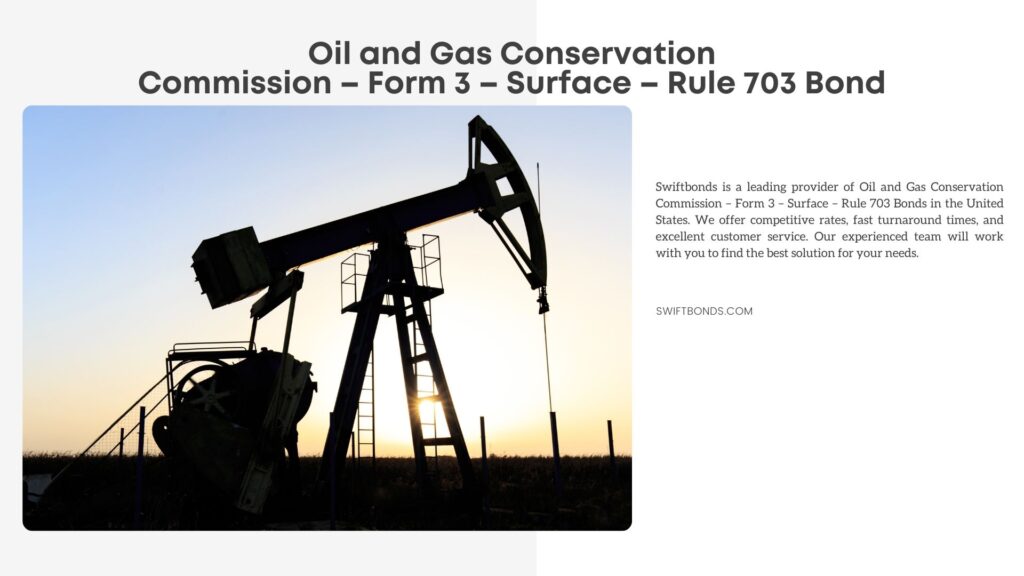What is the Form 3 – Surface – Rule 703 Bond?
The Form 3 – Surface – Rule 703 Bond is a type of financial assurance required by the COGCC from oil and gas operators in Colorado. It serves as a form of insurance to cover the costs associated with the reclamation and remediation of land impacted by oil and gas operations. In simpler words, it's like a security deposit that operators must pay to ensure they clean up and restore the land once they finish extracting oil or gas.
Get An Instant Quote on Colorado Oil and Gas Conservation Commission – Form 3 – Surface – Rule 703 Bond Now
Why is it Important?
- Environmental Protection: Oil and gas extraction can disturb land, water, and wildlife habitats. The Form 3 bond ensures that operators have funds available to restore the environment to its original state once operations cease.
- Community Safety: Oil and gas operations can sometimes pose risks to nearby communities, such as air and water pollution or land subsidence. By requiring operators to have a bond, the COGCC helps ensure that they can address any unforeseen issues that may arise during or after operations.
- Economic Responsibility: The bond holds operators financially accountable for their activities. If they fail to fulfill their obligations, the funds from the bond can be used to cover the costs of reclamation, protecting taxpayers from bearing the burden.
If you need help finding the right type of bond or have any questions about our products, please contact us at (913) 214-8344 or email [email protected]. We’re here to answer all your questions!
Click this now and find out more information about our company!

Frequently Asked Questions
What factors determine the bond amount for Form 3 – Surface – Rule 703?
The bond amount is not one-size-fits-all and depends on various site-specific factors. These factors can include the size and scope of the proposed operations, the type of terrain and vegetation in the area, potential environmental risks, and the estimated costs of reclamation and remediation. Additionally, the COGCC considers the operator's track record, financial stability, and compliance history when determining the bond amount. Essentially, the bond amount is tailored to each operation to ensure adequate coverage for potential restoration costs.
Can operators use alternative forms of financial assurance instead of a traditional bond?
Yes, the COGCC allows operators to use alternative forms of financial assurance, in addition to traditional surety bonds. These alternatives may include letters of credit, cash deposits, or third-party guarantees. The goal remains the same: to provide financial security for reclamation and remediation activities. However, the specific requirements and conditions for alternative forms of financial assurance may vary, and operators must ensure compliance with COGCC regulations.
What happens if the actual reclamation costs exceed the bond amount?
While the COGCC strives to ensure that bond amounts are sufficient to cover potential reclamation costs, there may be instances where actual costs exceed the bond amount. In such cases, the COGCC may use additional financial assurance mechanisms, such as other bonds or funds collected from operators, to cover the shortfall. However, if there are still insufficient funds to complete reclamation, the COGCC may step in to oversee and fund the remaining restoration activities. This underscores the importance of accurate cost estimation and ongoing monitoring of reclamation efforts.



